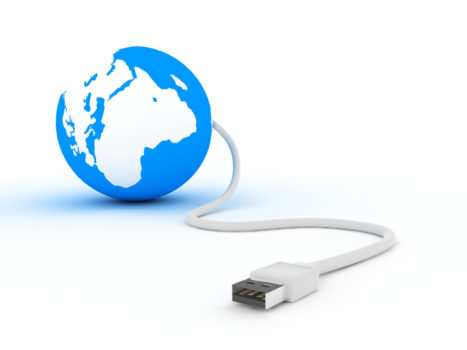Key Challenges Holding Back OTT Monetisation Opportunities for APAC

With more consumers turning to over-the-top services, such as on-demand video and messaging, analysts expect increasing ad dollars to go towards this space. The same momentum is expected for Asia-Pacific, but the region faces similar global challenges that threaten to hold back monetisation opportunities. In this week's industry byliner, Vicki Lyon, Ooyala's Asia-Pacific director of ad tech, highlights key issues that remain unresolved and explains why current solutions are not sufficient.
According to The Diffusion Group (TDG), the weekly average time US internet users spend watching OTT (over-the-top) TV will rise 425% by 2022, from 3.6 hours to 18.9 hours. This represents a rapid migration to OTT via platforms such as Apple TV, Roku, smart TVs, and mobile apps. TDG also projects that OTT ad spend will follow suit, jumping from USD$8.4bn (£6.37bn) in 2015 to USD$31.5bn (£23.88bn) by 2018.
Growth is also bullish in Asia-Pacific. Digital TV Research says the region's OTT market is set to explode with OTT ad revenues forecasted to more than triple, reaching USD$8.7bn (£6.6bn) by 2021, up from USD$2.6bn (£1.97bn) in 2015. The high growth is to be expected, after all; OTT TV provides the closest TV-like experience that digital-minded advertisers can buy.
The mobile opportunity for OTT in Asia-Pacific also is enormous. Data from Ooyala's recent Global Video Index shows 43% of all video viewing across the region is on mobile devices, with some countries more mobile-savvy than others. In particular, Singapore leads with 55% of all video viewing occurring on mobile devices, while Australia is second at 53%, Japan at 50%, Indonesia at 49%, and South Korea at 47%.
While the demand and forecasts may tell a strong tale, however, there's a fundamental lack of infrastructure and standardisation holding the industry back from capitalising on the projected opportunity.
Held back by key challenges
OTT is still a relatively new medium and is competing with linear TV, which still has a significant hold on the market. It also is experiencing issues commonly associated with digital advertising, such as concerns around viewability, fraud, standardisation and, certainly, measurement.
At a more basic level, there are disparities in ad creative formats between buyers, sellers, and third parties.
The disparities have come about because the ecosystem is trying to treat OTT environments like the online platform, as if the two are interchangeable, passing along the same ad formats and file types. However, nothing could be further from the truth.

Vicki Lyon, Asia-Pacific Director of Ad Tech, Ooyala
Serving video ads for OTT viewing is not a one-size-fits-all process. For example, some streaming devices have stringent protocols where, for example, all content and ads must be HD in MP4 format, while others adopt walled-garden approaches. The issue becomes more complex as additional screens, apps and protocols, and multiple campaigns are added to the mix.
Since much of OTT viewing is done on a large screen, publishers have a deep interest in curating a high level of experience in high definition. In fact, data from Ooyala's customer base in Asia-Pacific shows that viewers on connected TVs spend more than 90% of their time on content lasting longer than 10 minutes.
However, with thousands of buyers producing video ads for dozens of environments, and no industry-endorsed standards or protocols, at the moment, it seems inevitable that mismatches will occur between what the advertiser sends and what the publisher wants or can manage. In my view, any mismatched ad in an OTT environment is one too many and glaringly problematic for the user experience. Yet, with no standards, or checks-and-balances system for matching creative between buyers and publishers, there is nothing to prevent buyers from sending suboptimal assets.
Current approaches hit or miss
The industry currently has a piecemeal approach to ensure the right creative is deployed for the right use case. On the buy-side, advertisers are partial to VPAID because it gives them greater control and support for interactive ads. In OTT environments, though, VPAID is less than an ideal approach. Such ads have been linked to failed ad-serving and unfilled inventory.
Also, interactive support simply doesn't make sense for OTT. When was the last time you interacted with an ad on your smart TV or even cared to do so? It's the wrong ad for the wrong environment. Furthermore, devices like Apple TV, XBox, and Roku don't support interactive ads at all, which complicates the situation further.
In an effort to iron out issues with VPAID in OTT, the IAB has recommended a shift to VAST 4.0, which allows the buyer to send through several creatives – such as a mezzanine, a standard MP4, and a VPAID – enabling publishers to then choose the format they want to use. This approach allows the publisher's ad server, or player, to consume the right ad on-the-fly, for the right format, device, or application.
That said, environments that run native code like Apple TV, Xbox, and so on, do not support VAST 4.0.
So, what's next?
The question comes down to who is ultimately responsible for the quality control for all OTT content, including ads and videos. Is it the connected devices, buyers, or publishers?
It largely comes down to the carrot or the stick. Connected devices each have their own proprietary protocols and native languages, and manufacturers have no pressure or incentive to change. For buyers, as long as they're reaching the right audience and impression goals, they, too, have no incentive or pressure to change.
So, perhaps publishers have the responsibility to keep the buy-side honest and provide the guidance needed to ensure the right format is delivered to the right device. After all, at the end of the day, it's the publishers' audience and they own the experience. Unfortunately, little can be done to stop buyers from sending suboptimal assets in the first place.
Clearly, VAST4.0, VPAID, and the IAB's efforts therein, address some of the issues around the monetisation of OTT, but many challenges remain. The bottom line is that publishers need a mechanism to help them increase demand – yet, still exercise some control over creative assets – while advertisers want control over the creative decision-making process.
Publishers also need to make inventory available across third-party platforms and DSPs need to make it easy for advertisers to meet publishers' needs.
The bottom line is: if the industry wants TV-like monetisation for OTT to truly take off, it has to end this game of responsibility hot-potato, and one that is replete with misplaced fault and lack of accountability.
Ad TechAdvertiserAPACCreativeMedia SpendMobilePublisherTV








Follow ExchangeWire